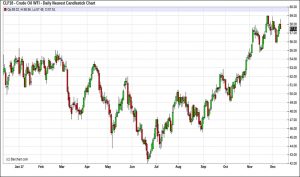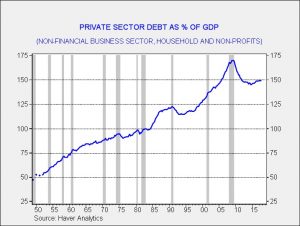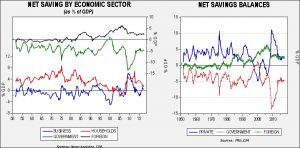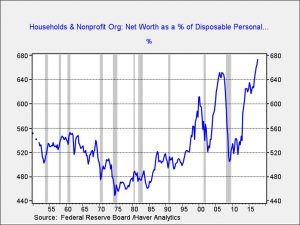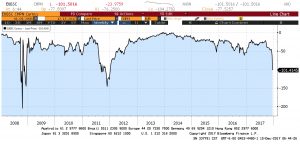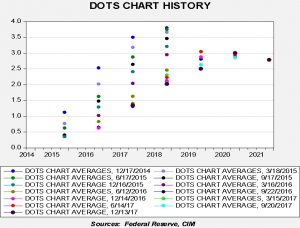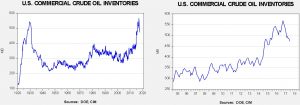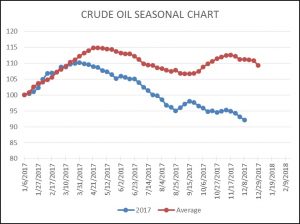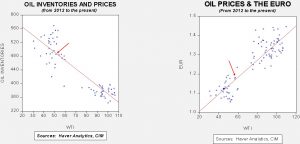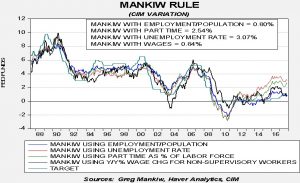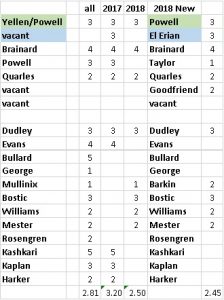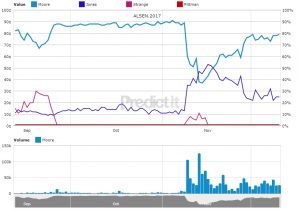by Bill O’Grady and Thomas Wash
[Posted: 9:30 AM EST] It’s a “green” day, with global equity markets mostly higher on the back of a strong Friday rally in the U.S. Here is what we are watching this morning:
Tax bill update: The clouds have parted and it looks like passage is likely. Various tweaks were made to placate wavering senators and it looks like it will gather enough votes to pass, even with Sen. McCain (R-AZ) missing a vote due to cancer treatment. Although no one seems to expect the House to object to the bill, we could still see a close vote there. But, in the end, we expect the president to have a bill to sign by mid-week.
From where we sit, this bill appears to have been put together in a hurry and thus there will be surprises. If political conditions were normal, fixes to problems would occur in the coming years. However, that won’t be likely given the partisan nature of the country at present. In fact, if the Democrats take back Congress at the mid-terms, look for all sorts of new tax bills that would raise marginal rates on the upper income brackets to be sent to the president for the sole purpose of triggering vetoes. Still, at least until 2020, the tax bill will be the law of the land.
What’s next? President Trump is scheduled to announce his National Security Strategy at 2:00 today. The main elements will be to call China a “strategic competitor” and accuse the PRC of pursuing policies of “economic aggression” against the U.S. It appears to us that the administration is now shifting from domestic policy to foreign policy and will focus on trade. This makes sense; the president has used much of his political capital on the repeal of the ACA and taxes. He will likely lose on the first but win on the second. On trade, the White House has greater powers to act without Congress but there may be bipartisan support for trade restrictions. Americans have become increasingly jaded about globalization; we are paying close attention to this issue because we believe that globalization and deregulation have been the keys to continued low inflation. These factors expand and flatten the aggregate supply curve and thus lead to lower inflation at every equilibrium. If these factors are reversed, there is the potential for rising future inflation. Although we are probably early in the process of changing policy on trade, impeding trade will likely boost inflation.
Global politics: In Chile, Sebastián Piñera, the conservative billionaire former president of the country, has won re-election. Local equity markets have been rallying on expectations of his victory. In Austria, the People’s Party and the Freedom Party, a right-wing and far right-wing party, respectively, have formed a coalition and will rule the country. Protests developed on the news. So far, the EU and other European leaders are showing caution with the new government. The Freedom Party has ties to the National Socialists and the EU put sanctions on Austria when it joined the government in 2000. In South Africa, the ANC is holding party nominations. Markets are hoping that Cyril Ramaphosa, a business leader running on an anti-corruption platform, will win against Nkosazana Dlamini-Zuma, the current president’s ex-wife who is running as a continuity candidate.
North Korea: On Friday, we discussed the recent execution of a high-ranking member of the North Korean military. Although disloyalty was signaled as the reason, we pondered whether military leaders were grumbling because Kim Jong-un was shifting resources away from the military to the civilian sector of the economy. One item we neglected to note was that on November 13th a North Korean soldier defected by running through the DMZ. He was shot and wounded by North Korean border troops but was brought to safety by allied forces. While treating the soldier, doctors discovered dozens of parasitic worms, some as long as 11”, in his digestive track. Although such infestations are commonly found among defectors, mostly because North Korean agricultural practices use human waste as fertilizer which spreads the parasites, we would expect better treatment for the military as they were given priority in resources under Kim Jong-il. Another clue emerged over the weekend; in a long article in the NYT, there was a discussion of how well soldiers and scientists tied to the missile and nuclear program are treated.[1] Kim Jong-un may be shifting resources to the nuclear program at the expense of the conventional military. This would make sense. The U.S. expanded development of its nuclear capabilities in the 1950s as a lower cost way of deterring the Soviets. North Korea may be working from the idea that a nuclear program will be cheaper than conventional military forces and as a result is allowing some diversion of resources to the civilian sector. Finally, in a speech to the Atlantic Council last week,[2] SOS Tillerson noted that the U.S. assured China that if U.S. troops land in the North to secure the nukes, American forces would leave once their work is complete. We suspect that China, South Korea and the U.S. are quietly making plans to secure North Korea if there is a coup or a fall of the Kim regime. The cited report suggests the U.S. will rely on China and South Korea to secure the country while American Special Forces secure the nuclear warheads.
Government funding: The Treasury will run out of spending authority by Friday unless Congress moves to approve spending. Although we expect a deal to be reached, there will be added tensions because of the tax bill. We look for the Democrat leadership in Congress to try to extract some support for DACA. A shutdown just before Christmas would be in bad form and both parties will probably try to avoid it, but the potential exists. If a shutdown occurs, look for Treasuries to rally.
Gold loses its luster: Bloomberg[3] reports that hedge funds are leaving the gold market, moving to equities and cryptocurrencies. To some extent, cryptocurrencies are a potential replacement for gold; if one is uncomfortable with fiat currencies, the chance to own bitcoin has allure. It can be traded anonymously and can be held in such a way that government and taxing authorities don’t know you have it. And, unlike gold, it can be easily transferred without the weight of gold (at least in theory—in reality, the infrastructure to move cryptocurrencies is rather clunky as reports surface of traders taking days to execute a transaction). At the same time, the security of cryptocurrencies is still uncertain; we may be only one security crisis away from a debacle. At least with gold, one who has it can touch and feel it. Even with the advent of a second futures contract (it now trades on the CBOE and CME), we still view price action as a bubble.
[1] https://www.nytimes.com/interactive/2017/12/15/world/asia/north-korea-scientists-weapons.html?emc=edit_mbe_20171218&nl=morning-briefing-europe&nlid=5677267&te=1
[2] https://www.nytimes.com/2017/12/17/us/politics/tillerson-north-korea-china.html?emc=edit_mbe_20171218&nl=morning-briefing-europe&nlid=5677267&te=1
[3] https://www.bloomberg.com/amp/news/articles/2017-12-15/-nobody-cares-about-gold-as-hedge-funds-seek-thrills-elsewhere?__twitter_impression=true



